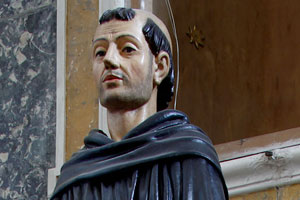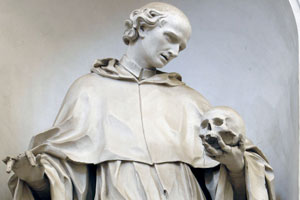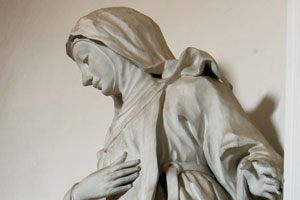The Church of Sant’Agostino
The success of the Augustinians
The Order of the Hermits of Saint Augustine in Siena contributed significantly, together with the other mendicant orders, to the economic and social development of the city, furnishing an example of how to live in a community and constituting a point of reference for the townspeople. Over the years the monks created a real Sienese identity tied to the veneration of some charismatic Augustinian figures. Among the most important were Saint Nicholas of Tolentino (1245-1305) and Blessed Agostino Novello, an Augustinian friar who died in the hermitage of San Leonardo a Lago around 1309. Immediately venerated as a saint, his mortal remains, by this point a pilgrimage goal, were taken to Siena into the church of Sant’Agostino. Because of his importance, in the 1320s Simone Martini was commissioned to paint the famous Altarpiece of Blessed Agostino Novello which is currently in Siena’s Pinacoteca Nazionale. Saint Rita of Cascia (late 14th century–1447) was also Augustinian. A nun intensely devoted to the Passion of Christ, as a young girl she received the stigmata on her forehead as an indelible sign of suffering. According to legend, right before she died she caused a white rose to bloom in her garden in the dead of winter; from then on, she was called the Saint of the Thorn and the Rose. This is why on the anniversary of her death, 22 May, in Siena all the faithful are given . . .





